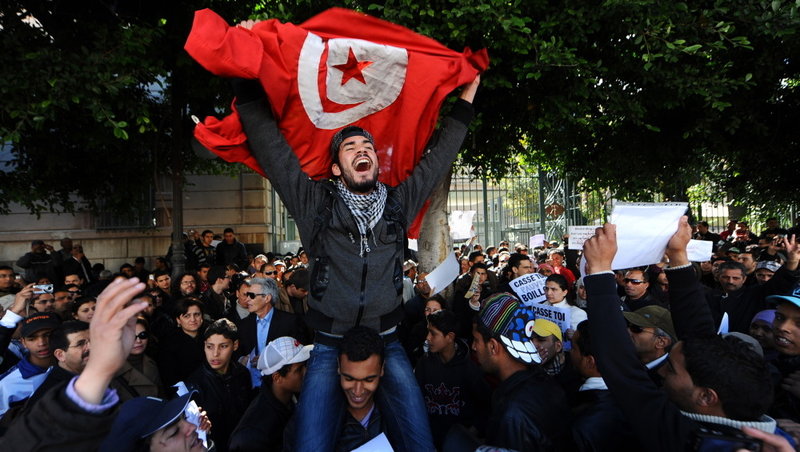TUNIS: Tunisia witnessed the first of the Arab Spring uprisings that rocked the Middle East and North Africa in 2011, forcing out several long-time leaders.
In the run-up to its September 15 presidential election, here is a recap of key developments in the country since the revolution.
President flees
Demonstrations erupt in December 2010 after the self-immolation of a fruit seller protesting police harassment and unemployment.
After weeks of unrest in which 338 are killed, dictator Zine El Abidine Ben Ali quits in January 2011, ending 23 years in power.
The first leader to be toppled by the Arab Spring, he flees to Saudi Arabia.
Victory for Islamists
In October 2011, Tunisia’s first free election sees Islamist group Ennahdha, legalised in March, win 89 of 217 seats in a new constituent assembly.
The assembly elects former opposition leader Moncef Marzouki as president in December. Hamadi Jebali, Ennahdha’s number two, is charged with forming a government.
Attacks, unrest
In April 2012, police clash with thousands of jobless protesters in the southwestern mining belt.
More violent demonstrations follow in June and August, and Islamists stage attacks.
In September, hundreds of demonstrators attack the US embassy in Tunis, in protest at an online US-made film that mocked Islam.
In late November, riots break out in Siliana, southwest of Tunis, injuring 300.
Strikes and demonstrations affect industry, public services, transport and business, with unrest mostly in the economically marginalised interior of Tunisia.
- Opposition leaders killed -
In February 2013, prominent anti-Islamist opposition leader Chokri Belaid is assassinated in Tunis.
In July, leftist opposition leader Mohamed Brahmi is also shot dead. Islamic State (IS) group jihadists claim both killings.
Democratic transition
In January 2014, a new constitution is adopted, a year later than planned. A government of technocrats is formed and Islamists withdraw from power.
In October, the secular Nidaa Tounes party led by Beji Caid Essebsi comes top in parliamentary polls and forms a coalition with Ennahdha.
Two months later, Essebsi wins Tunisia’s first free presidential election.
Carnage
In 2015, Tunisia suffers three attacks claimed by IS militants based in neighbouring Libya.
The attacks leave 72 dead, mostly foreign tourists and security personnel, including at the Bardo Museum in Tunis and a Mediterranean coastal resort.
In March 2016, jihadists attack security installations in the town of Ben Guerdane on the Libyan border, killing 13 members of the security services and seven civilians.
Although security has improved, a state of emergency established in 2015 has been repeatedly extended.
- Fresh protests -
In January 2016, a new wave of protests erupted after the death of a young unemployed man in a demonstration.
In May, the International Monetary Fund green lights a new four-year loan of US$2.9 billion (RM12 billion).
In January 2018, new protests erupt after an austerity budget takes effect.
Political instability
Essebsi in September announces the end of his party’s alliance with Ennahdha, which had been part of a unity government since 2016.
In November, the prime minister, Youssef Chahed, announces a government reshuffle but faces criticism from the president.
On July 25, the ailing Essebsi dies aged 92, months before the end of his term.
On August 8, Chahed says he is standing for the presidency. In June, he had been elected head of a new political party, Tahya Tounes.
The authorities on August 23 arrest a controversial presidential candidate and founder of a major private television channel, Nabil Karoui, on charges of money laundering. — AFP









